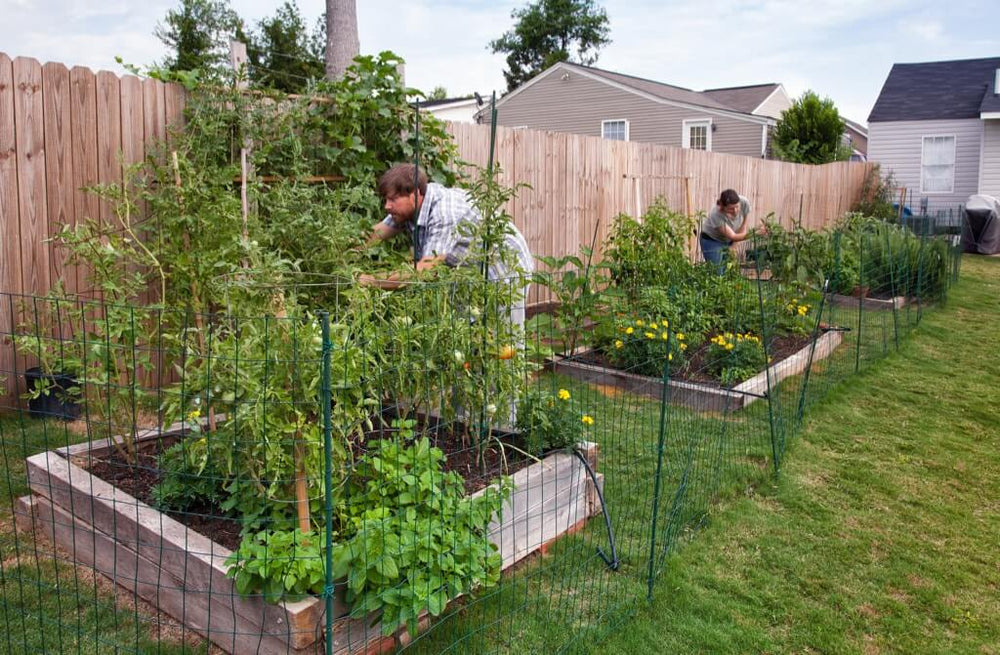Is there anything more satisfying and delicious than growing your own food? From the first tender tips of asparagus in spring to the tasty tang of summer's homegrown tomatoes, a garden filled with beautiful, productive plants provides a terrific sense of accomplishment—and fabulous, fresh meals. In order to grow such an amazing harvest, though, it's important to figure out the best vegetable garden layout for your space and the plants you want to grow. Here's how to do it.
1. Select Your Site
To begin, take stock of your potential growing space. Consider these elements:
Where do you get the most sun? Many vegetables require 6 to 8 hours of sunlight a day. Note that the south, east, and west sides of your home will get more sun than the north.
Is there a spot near the house? If you lay out your vegetable garden near an entrance way, you'll pass it often. That way, it's more likely that you'll notice when watering is needed or pests invade
Is there already a lot of vegetation around? If there is a large number of shrubs or trees, they will compete with your garden not only for nutrients and moisture in the soil, but also for sunlight. Be sure to steer clear of walnut trees, which produce a toxin that's harmful to vegetable plants.
How far away is the water? Make certain that the space you select for your vegetable garden layout provides easy access to a water source. Do that and you won't have to schlep a hose or heavy watering can all over the yard.
How much space do you need? While having a huge garden may sound like a great idea, it can also be overwhelming if you're a new gardener. It's better to start small, with a few raised beds or containers, then add to your vegetable garden plan each year.
2. List What You Love
Are you a culinary master, hoping to grow a rainbow of heirloom tomatoes for fabulous meals? Do you adore Brussels sprouts but despise collards? Before you purchase any plants, create a list of the vegetables you love, then allocate space in your vegetable garden layout to grow them.
Be sure to include space-saving trellises to support vining veggies like cucumbers and peas, and if perennial plants like asparagus and strawberries top your favorite foods list, consider creating a permanent plot for them to grow.
3. Lay Out Your Garden on Paper
Although it may give you an unwelcome flashback to geometry class, graph paper really is your friend when creating a vegetable garden layout. By putting your garden on paper before you lift a shovel, you'll save time—and avoid potential mistakes.
First, take a photo of your garden area and measure its approximate size. Using a ratio of 1 foot = 1 box on the graph paper, sketch the beds and containers you plan to use, leaving enough space between them to push a wheelbarrow. Limit the width of each vegetable bed to 3 to 4 feet, so that you'll be able to reach across the bed to plant, weed, or harvest without stepping onto the soil and compacting it.

4. Add Your Plants
Now, add the names of the plants you want to grow to the vegetable garden planner, making sure to leave enough space in between each one. (To find out how much space each plant requires, look for your favorite varieties here.) Crowded plants have to compete for nutrients, sunlight, and water, so they're not able to grow as big and strong as they otherwise would.
As a general rule, put tall veggies toward the back of the bed, mid-sized ones in the middle, and smaller plants in the front or as a border. Consider adding pollinator plants to attract beneficial insects that can not only help you get a better harvest, but will also prey on garden pests.
Also, if this isn't your first garden, think about where you planted your veggies last year, then be sure to rotate them to different beds for the coming season to help prevent diseases and avoid plant-hungry pests that overwinter in the soil. (Learn more about crop rotation right here.)
To give yourself the best chance for a big harvest, mix Miracle-Gro® Garden Soil for Vegetables & Herbs into your beds, use Miracle-Gro® Potting Mix in your containers, and feed your plants regularly with Miracle-Gro® Shake ‘n Feed® Tomato, Fruit & Vegetable Plant Food so you know they're getting all the nutrition they need. (Be sure to follow label directions.)
5. Learn from Your Successes (and Failures)
Use your vegetable garden planner to make notes for next year's garden. What tomato provided the tastiest BLT? What kind of plant proved most challenging to grow? Were there any drawbacks to the space you chose? Even a good vegetable garden layout can get better. Celebrate your delicious garden successes, then go ahead and tweak your layout to grow even more veggies next year.




 Herbs
Herbs
 Vegetables
Vegetables
 Fruit
Fruit
 Flowers
Flowers
 Succulents
Succulents


